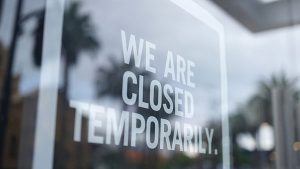
Background: The COVID-19 crisis has led to historically unprecedented increases in the level of initial Unemployment Insurance (UI) claims filed in California since the start of the crisis in mid-March, 2020. Through a partnership with the Labor Market Information Division of the California Employment Development Department, the California Policy Lab is analyzing daily initial UI claims to provide an in-depth and near real-time look at how the COVID-19 crisis is impacting various industries, regions, counties, and types of workers throughout California.
Return to the main report page to see all of the policy briefs, data points, and media coverage.
Disparities in Access to Unemployment Insurance During the COVID-19 Pandemic: Lessons from US and California Claims Data
Published February 10, 2022
By
JOURNAL ARTICLE: Disparities in Access to Unemployment Insurance During the COVID-19 Pandemic: Lessons from U.S. and California Claims Data
(published in RSF: The Russell Sage Foundation Journal of the Social Sciences)
PRESS RELEASE: Report Finds Large Differences in Access to Unemployment Benefits Across the U.S. During COVID-19 Pandemic
Unemployment Insurance (UI) benefits provided a lifeline to workers who lost their jobs during the pandemic. However, access to these benefits has been uneven across communities and states, and identifying and documenting these disparities is an important step to addressing them and to rendering the UI system more equitable. The California Policy Lab conducted this research after being selected as one of five research teams to compete in the U.S. Department of Labor’s first ever Summer Data Challenge on Equity and Underserved Communities. Utilizing a conceptual framework of unemployment claims, CPL developed three metrics to measure access to UI benefits across the claim lifecycle. CPL then analyzed these measures to provide insight into differential access to UI benefits across U.S. states and across counties within California. The additional information available in the California claims data allowed CPL to improve and further segment its measures of access and to identify new facts and patterns from the data. These metrics are for the year 2020 and the analysis is focused on the time period from the beginning of the pandemic in March through December 2020, just prior to the initial rollout of COVID-19 vaccines. These measures are also compared to the corresponding values in December 2019 as a pre-pandemic benchmark.
Suggested Citation: Bell, A., Hedin, T.J., Mannino, P., Moghadam, R., Schnorr, G., von Wachter, T.. (2022). Disparities in Access to Unemployment Insurance During the COVID-19 Pandemic: Lessons from US and California Claims Data. California Policy Lab. https://www.capolicylab.org/publications/disparities-in-access-to-unemployment-insurance-during-the-covid-19-pandemic-lessons-from-us-and-california-claims-data/
Key Research Findings
1. This report examines disparities in access to UI across the US and in California using three metrics corresponding to different parts of the lifecycle of a UI claim – the recipiency rate, the first payment rate and the exhaustion rate. The recipiency rate is the share of unemployed or underemployed workers who receive benefits; the first payment rate is the share of people who file for UI and subsequently receive at least one payment; and the exhaustion rate is the share of claimants who have received all the regular and extension benefits they were eligible for.
Measuring Access in Unemployment Insurance Claims Data
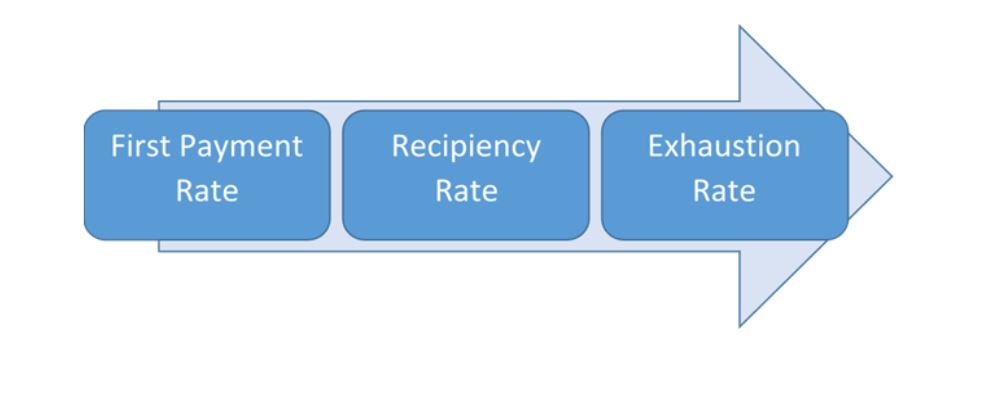
2. Nationally, access to UI benefits increased substantially during the COVID-19 pandemic with 60% of unemployed workers receiving UI in December 2020 relative to 16% in December 2019. There were substantial differences in all three measures of access states in 2020. States in the south and mid-west generally had lower levels of access with recipiency rates in Florida reaching only 16%.
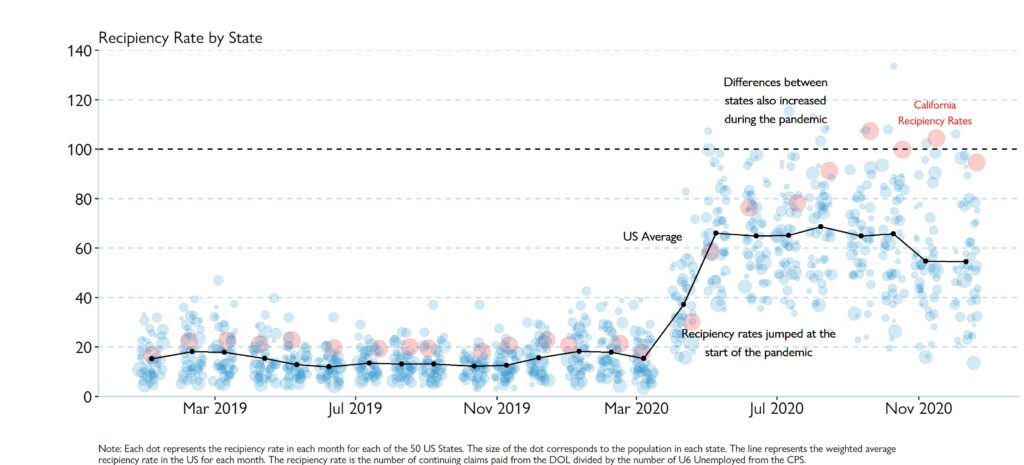
3. Across states, there were clear correlations between these measures of access and both demographic and policy factors. Lower exhaustion rates were correlated with states that had more generous UI and labor policies (such as longer benefit durations, high benefit amounts, or paid sick leave programs) and with wealthier states. In contrast, states with less generous policies and with fewer affluent residents and higher shares of Black residents were associated with lower access to benefits.
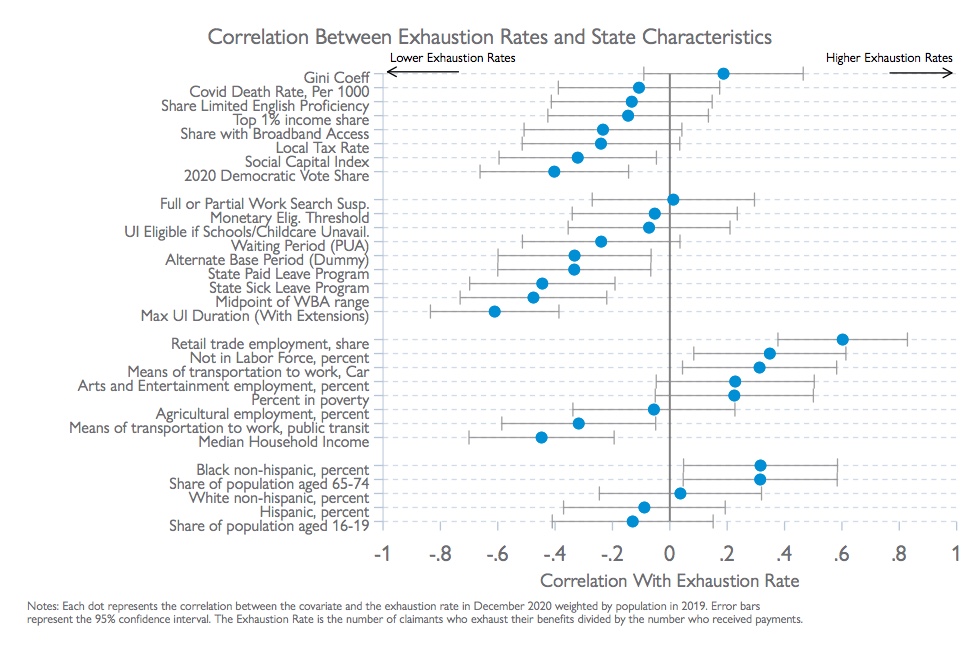
4. California had the fourth highest recipiency rate in the country at the end of 2020. Within California, access to UI increased during the pandemic with recipiency rates rising from roughly 20% before the pandemic, to 80% in December 2020. There were some differences across counties in all three measures of access, but there was far less variation across counties within California, than there was across states in the US.
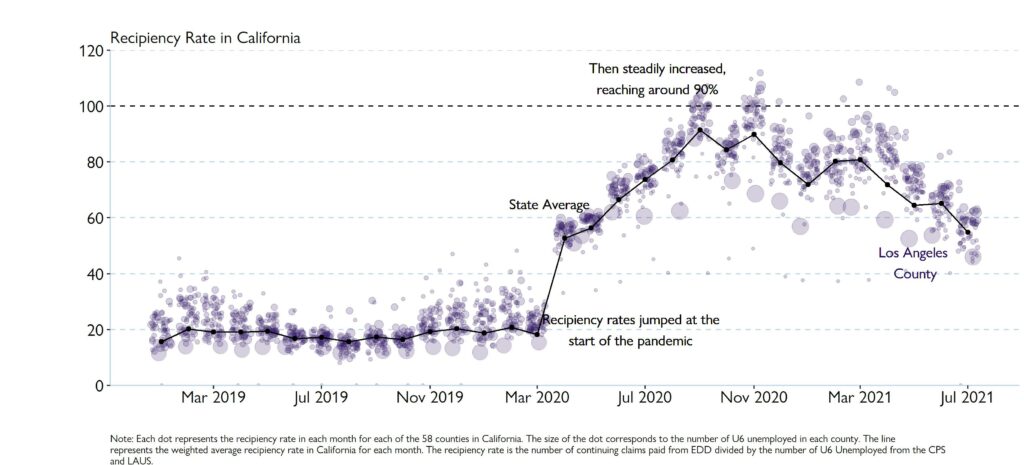
5. Across counties in California, UI policy remains constant and demographic and administrative barriers to access have stronger relationships to differences in access. For example, across states Broadband access was uncorrelated with first payment rates, but across counties in California it is strongly correlated. First payment rates are also higher in wealthier countries with higher incomes and a lower share of people in poverty.
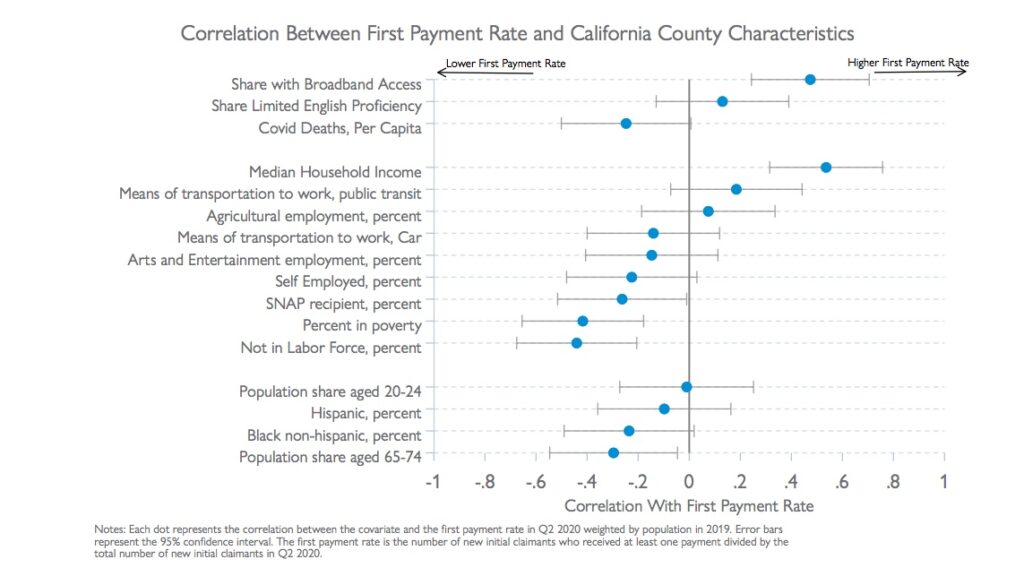
Suggested Citation: Bell, A., Hedin, T.J., Mannino, P., Moghadam, R., Schnorr, G., von Wachter, T.. (2022). Disparities in Access to Unemployment Insurance During the COVID-19 Pandemic: Lessons from US and California Claims Data. California Policy Lab. https://www.capolicylab.org/publications/disparities-in-access-to-unemployment-insurance-during-the-covid-19-pandemic-lessons-from-us-and-california-claims-data/
